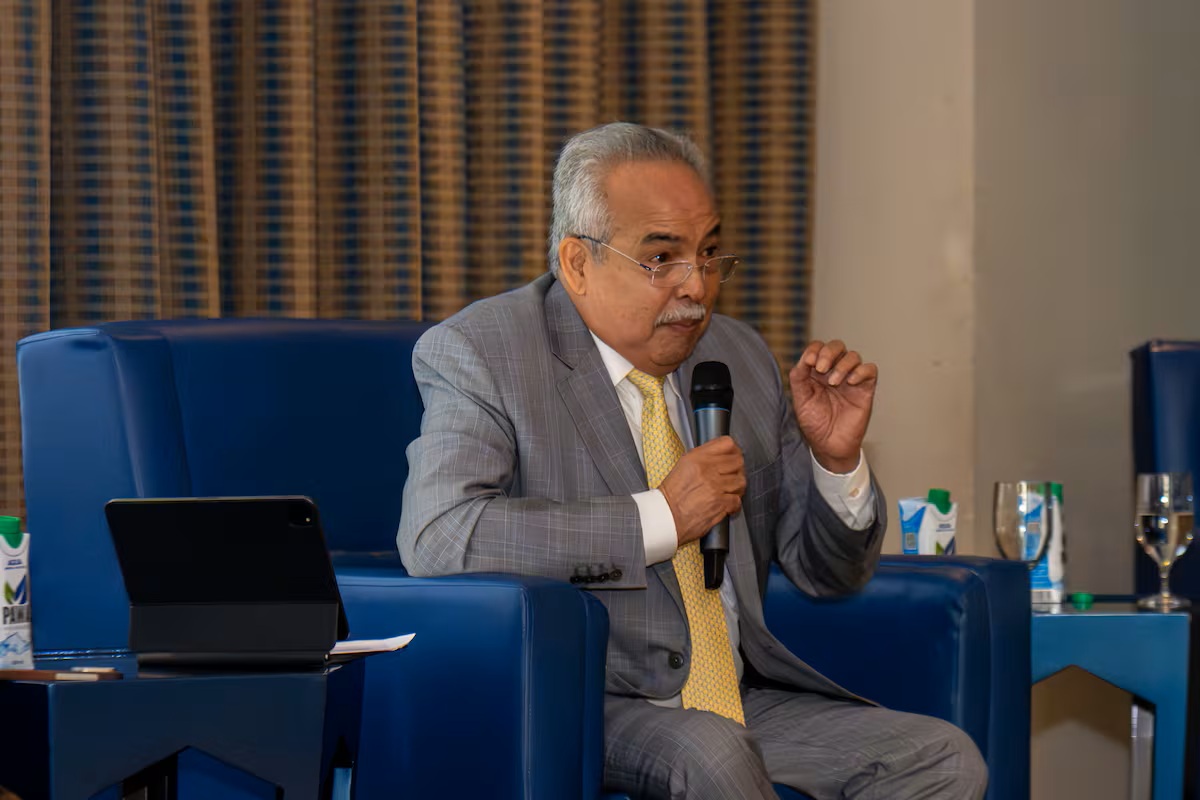‘Panama can gain an Advantage if it Plays its Cards Right in Global Maritime Trade’ says Carlos Urriola Maritime and Port Sector Expert
The maritime and port sector expert believes it’s time for Panama to increase its capacity to handle bulk cargo, containers, gas, and other cargo, in addition to developing pending port projects in the Pacific, such as a terminal in Corozal and another in Farfán.

Global maritime trade is adapting amid the trade war between the United States and China. Panama is key to this process, moving between 5% and 6% of all global trade through the Canal. How will the tariff war affect port flows and transit through the Canal? It highlights how this conflict is reshaping shipping routes and creating opportunities for Panama, which can leverage its strategic position to strengthen its role as a regional transshipment and logistics hub.
Panama can win the global shipping game by leveraging its strategic location and the Panama Canal’s unique advantages to become a global hub for logistics and trade. This involves maximizing the Canal’s capacity, optimizing port operations, and fostering partnerships with key players in the shipping industry.
How Panama can “Win” the Global Shipping Game:
- Maximize Canal Capacity and Efficiency:
- The Panama Canal expansion project has increased vessel capacity, allowing for larger vessels to transit.
- Continued investment in infrastructure, including improved locks and navigation systems, is crucial for maintaining efficiency and reducing transit times.
- The canal’s ability to handle a diverse range of vessels, including container ships and gas carriers, is a key advantage, as demonstrated by the recent statistics from the Panama Canal Authority (ACP).
- Optimize Port Operations:
- The Port of Balboa, a major hub for container shipping, can be further developed to handle increased traffic and reduce congestion.
- Investments in other ports along the Caribbean and Pacific coasts can diversify Panama’s shipping infrastructure and provide alternative routes for cargo.
- Digital transformation and automation can improve port operations, reduce turnaround times, and enhance efficiency.
- Foster Strategic Partnerships:
- Panama can collaborate with international shipping companies to promote the canal’s advantages and attract more traffic.
- Engaging with governments and trade organizations can help create a favorable regulatory environment and reduce barriers to trade.
- Investing in research and development in areas like port automation and sustainable shipping practices can further enhance Panama’s competitive edge.
- Leverage Geopolitical Advantages:
- Panama’s neutral stance in global trade and its strong ties with major trading partners, including the US and China, provide a strategic advantage.
- The canal’s location as a shortcut between the Atlantic and Pacific oceans, significantly reducing travel time and fuel consumption for ships, is a major draw for global shipping.
- Panama’s commitment to maintaining a reliable and efficient shipping route is essential for building trust and fostering long-term partnerships with global shippers.





